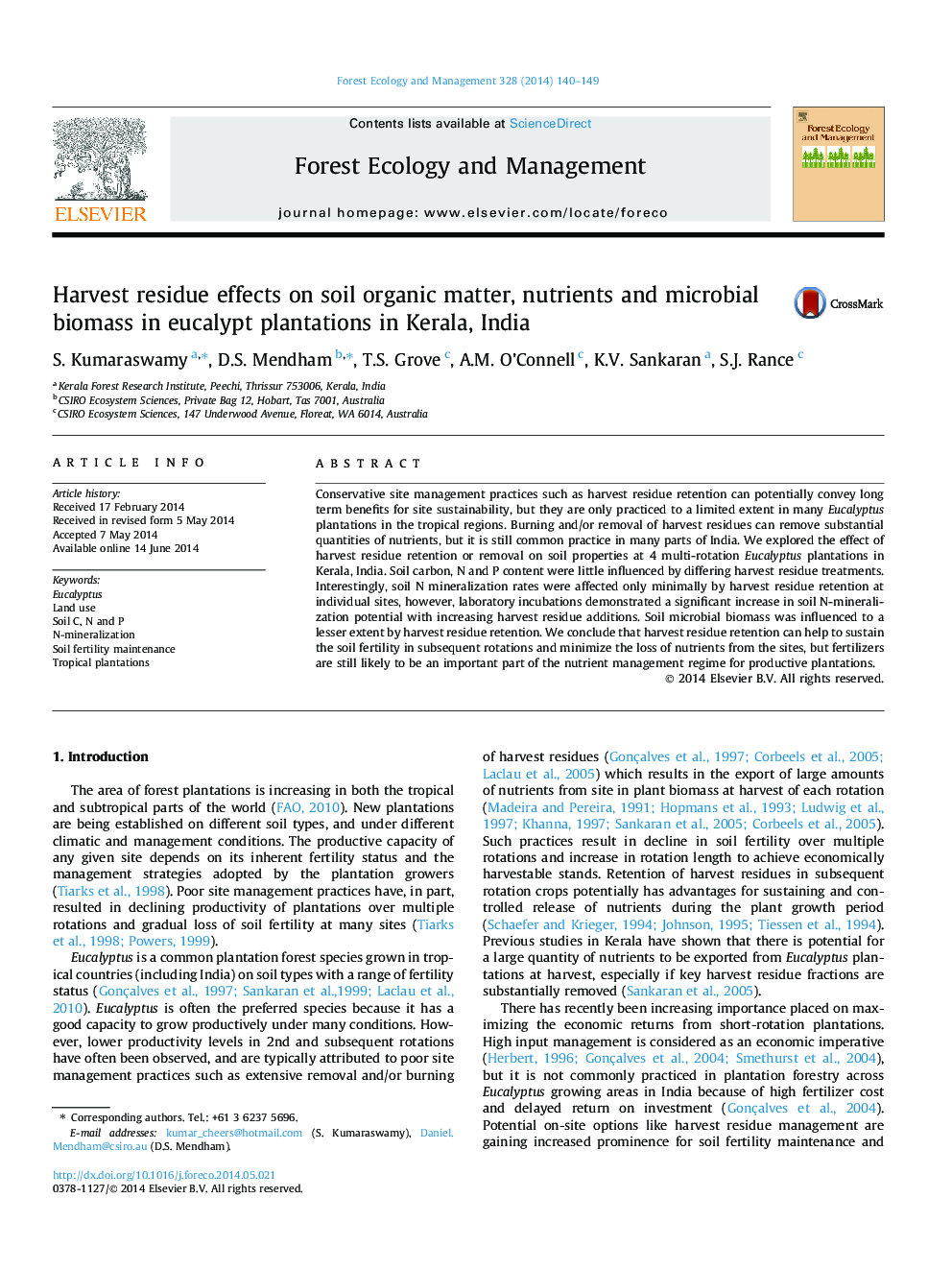| Article ID | Journal | Published Year | Pages | File Type |
|---|---|---|---|---|
| 86513 | Forest Ecology and Management | 2014 | 10 Pages |
•Harvest residue management had few effects on soil nutrient pools at age 2 years.•Residue retention tended to increase N availability and soil microbial biomass.•Residue retention is important, but is not likely to be a substitute for fertilizer.
Conservative site management practices such as harvest residue retention can potentially convey long term benefits for site sustainability, but they are only practiced to a limited extent in many Eucalyptus plantations in the tropical regions. Burning and/or removal of harvest residues can remove substantial quantities of nutrients, but it is still common practice in many parts of India. We explored the effect of harvest residue retention or removal on soil properties at 4 multi-rotation Eucalyptus plantations in Kerala, India. Soil carbon, N and P content were little influenced by differing harvest residue treatments. Interestingly, soil N mineralization rates were affected only minimally by harvest residue retention at individual sites, however, laboratory incubations demonstrated a significant increase in soil N-mineralization potential with increasing harvest residue additions. Soil microbial biomass was influenced to a lesser extent by harvest residue retention. We conclude that harvest residue retention can help to sustain the soil fertility in subsequent rotations and minimize the loss of nutrients from the sites, but fertilizers are still likely to be an important part of the nutrient management regime for productive plantations.
